Introduction to Wooden Bookshelves: Beyond Storage
Wooden bookshelves have long been a cornerstone of home decor, blending practicality with aesthetic appeal. Unlike their plastic or metal counterparts, these shelves offer warmth, durability, and a touch of natural beauty. Their versatility makes them ideal for living rooms, home offices, or even bedrooms, transforming empty walls into functional art pieces.
The term “wooden bookshelves” often evokes visions of classic libraries, but modern designs stretch far beyond that. Today, they come in a variety of styles—from sleek minimalist units to rustic farmhouse-inspired pieces. However, choosing the right set requires understanding key factors like wood type, customization options, and maintenance.
For instance, custom bookshelves can be tailored to fit unique spaces, such as narrow hallways or oddly shaped corners, while eco-friendly options prioritize sustainability without sacrificing style.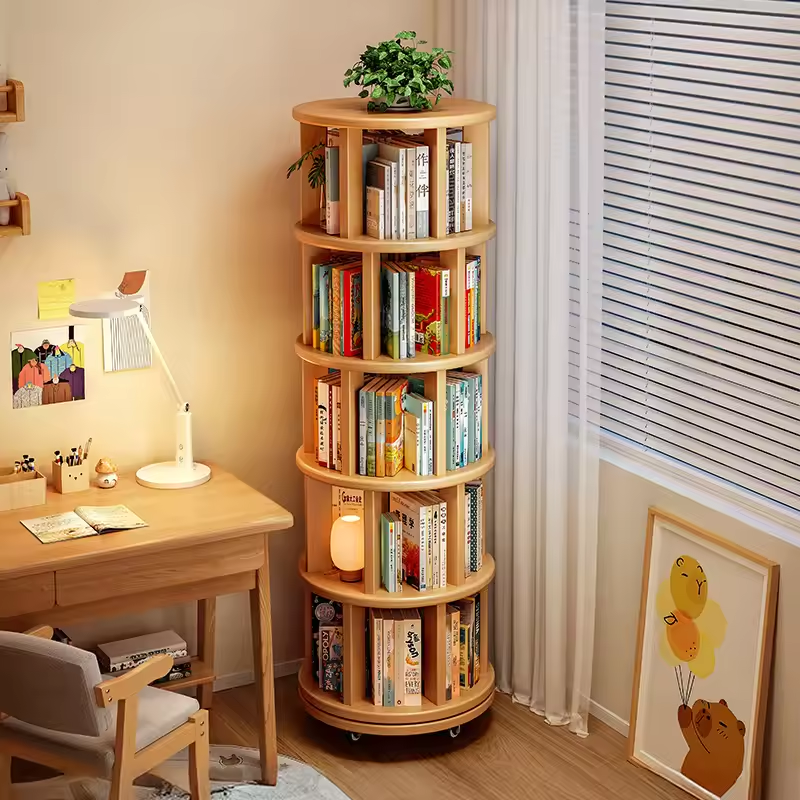
Design Styles: From Modern Minimalism to Rustic Charm
Wooden bookshelves cater to every design aesthetic, offering endless possibilities for personalization. Here’s how to choose the right style:
- Modern Minimalism:
Sleek lines, light wood tones (e.g., white oak or birch), and clean finishes create a contemporary look. These shelves often pair with neutral decor to maintain a clutter-free vibe. - Rustic/Industrial:
Heavier woods like pine or reclaimed oak, combined with visible grain or distressing, evoke a rugged charm. Open slats or metal accents add industrial flair, perfect for loft-style homes. - Traditional/Elegant:
Darker woods (mahogany, walnut) and carved details suit formal spaces. These shelves often complement antique or classic furniture, adding sophistication to living rooms. - Mid-Century Modern:
Warm wood tones paired with tapered legs or geometric shapes reflect mid-century design principles. Ideal for spaces seeking a retro yet timeless feel.
A well-chosen style ensures wooden bookshelves become a cohesive part of your room’s identity rather than an afterthought.
Choosing the Right Wood: Material Matters
The type of wood used significantly impacts durability, cost, and appearance. Common options include:
- Solid Wood:
- Pros: Long-lasting, resistant to warping, and aesthetically pleasing.
- Cons: Higher cost; requires occasional finishing to maintain appearance.
- Best for: Custom bookshelves needing a premium look, such as a home library.
- Engineered Wood (MDF/Plywood):
- Pros: Affordable, lightweight, and easier to paint or stain.
- Cons: Less durable over time; may dent or scratch more easily.
- Best for: Budget-friendly shelves or high-traffic areas.
- Reclaimed Wood:
- Pros: Eco-friendly, unique grain patterns, and rustic appeal.
- Cons: Irregular sizing may require custom fitting.
- Best for: Industrial or farmhouse-style decor.
Consider factors like humidity exposure (avoid solid wood in bathrooms) and the desired maintenance level.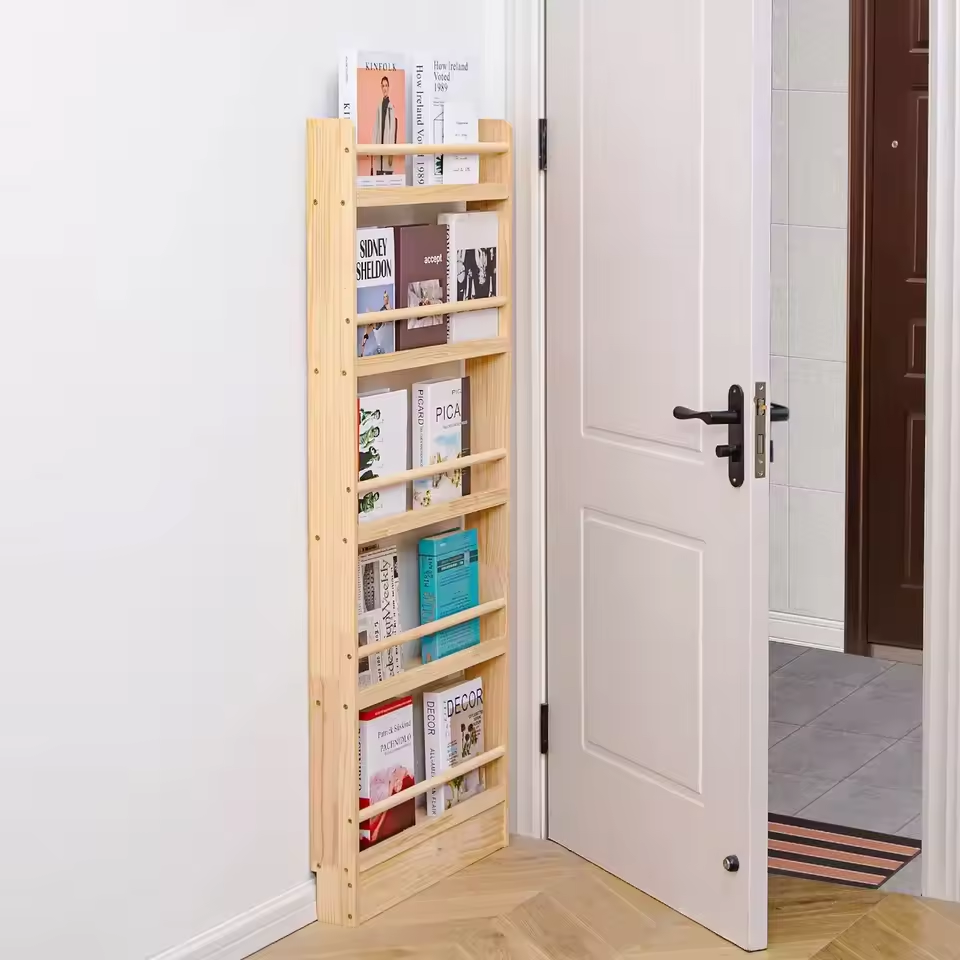
Customizing Wooden Bookshelves to Suit Your Needs
Custom bookshelves unlock endless possibilities to tailor storage to your unique space and style. Whether you need a functional upgrade or a design statement, customization ensures shelves seamlessly integrate into your home:
- Space Optimization:
- Niche Solutions: Fit shelves into awkward corners with L-shaped or curved designs. For example, a triangular unit in a bedroom nook doubles as a reading area divider.
- Height & Width Adjustments: Create floor-to-ceiling units for tall rooms or slim shelves for narrow hallways.
- Functional Add-Ons:
- Add hidden compartments, sliding doors, or adjustable shelves to store items like board games or seasonal decor.
- Incorporate LED lighting strips or magnetic boards for practicality.
- Aesthetic Matching:
- Stain or paint wood to complement existing furniture (e.g., espresso tones for a dark living room or whitewashed pine for a farmhouse kitchen).
- Blend open shelving with closed cabinets for a hybrid look that balances style and privacy.
- Material Choices:
- Opt for reclaimed wood for rustic charm or sleek oak for modern minimalism.
Pro Tips:
- Work with designers to draft 3D models before finalizing.
- Prioritize durability—thicker wood resists warping in high-humidity areas.
Customization transforms wooden bookshelves into functional art, ensuring they adapt to your home’s evolving needs rather than dictating your space’s layout.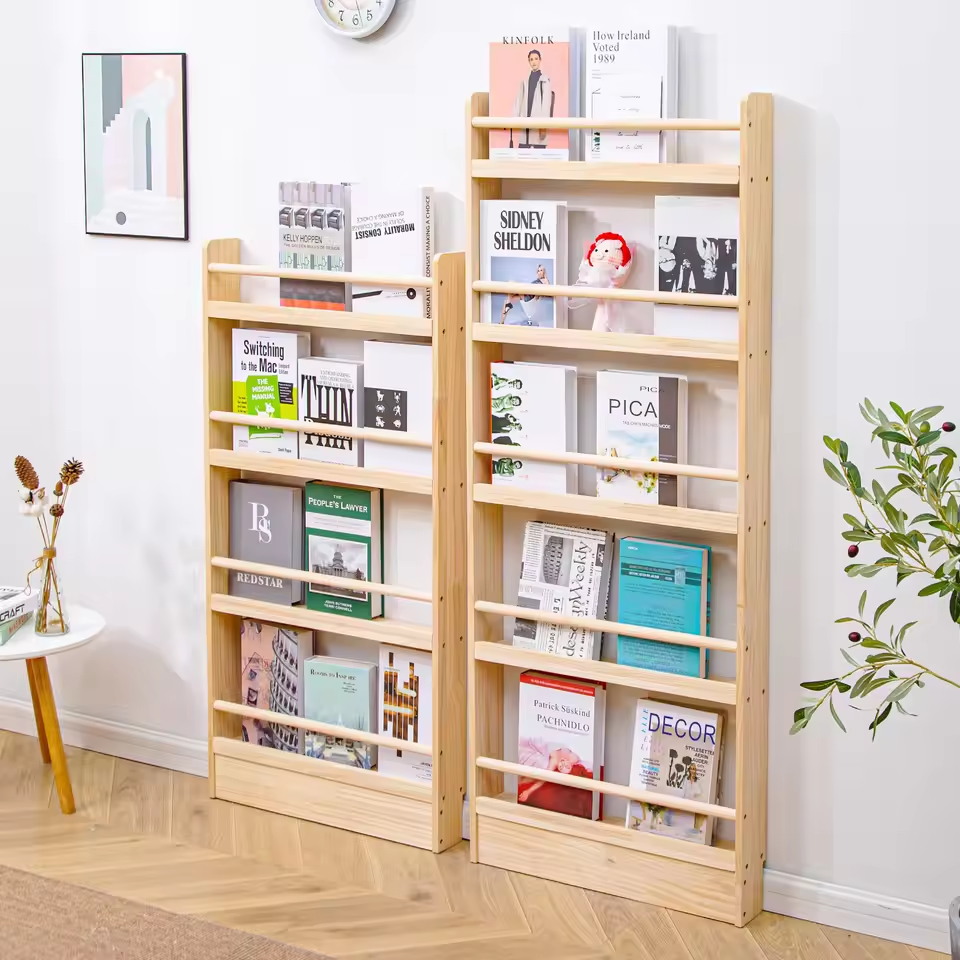
The Eco-Friendly Edge of Wooden Furniture
Wooden furniture, including bookshelves, offers significant environmental benefits compared to synthetic alternatives. Here’s how it contributes to sustainable living:
- Renewable Resources:
Responsibly sourced wood (e.g., FSC-certified) ensures forests are replanted, unlike plastic or metal, which rely on finite resources. Reclaimed or recycled wood further reduces waste by repurposing discarded materials. - Carbon Sequestration:
Trees absorb CO₂ during growth, and wooden furniture continues storing carbon even after harvest. A solid-wood bookshelf sequesters carbon for decades, offsetting emissions. - Durability and Longevity:
High-quality wooden bookshelves last decades with proper care, reducing the need for frequent replacements. This contrasts with plastic furniture, which often ends up in landfills after a few years. - Eco-Friendly End of Life:
Wooden furniture can be repurposed, donated, or composted. Even particleboard (if non-toxic) breaks down faster than synthetic composites. - Low Production Impact:
Manufacturing wood requires less energy than producing steel or plastic. Opting for local wood further reduces transportation emissions.
Smart Choices:
- Look for non-toxic finishes (e.g., water-based stains) to avoid VOC emissions.
- Avoid pressure-treated or chemically treated woods for indoor use.
By choosing wooden furniture, you support renewable resources, reduce waste, and create pieces that age gracefully while minimizing environmental harm.
Maximizing Space with Strategic Placement
Strategic placement of wooden bookshelves transforms cramped spaces into functional havens. Here’s how to optimize layouts for maximum efficiency:
- Vertical Stacking:
Install shelves from floor to ceiling to utilize vertical space. For example, a ladder-backed unit in a living room creates a library-like nook while avoiding floor clutter. - Corner Optimization:
L-shaped or triangular shelves turn unused corners into storage zones. A curved shelf in a bathroom corner can hold toiletries and towels. - Hybrid Systems:
Combine open wooden bookshelves with enclosed cabinets. Place heavier items (e.g., cookbooks) in cabinets and decorative objects on open shelves for a layered look. - Above Furniture:
Install shelves above sofas, beds, or dressers to store books or decor without competing for floor space.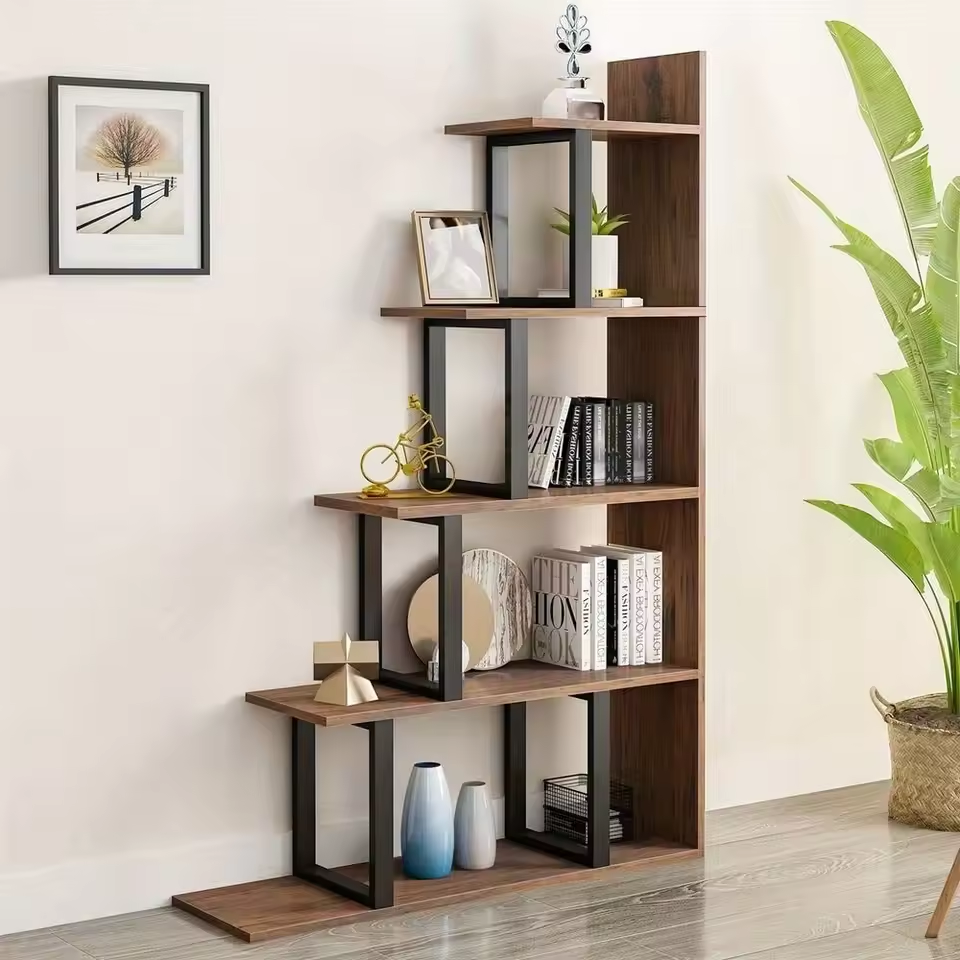
- Niche Integration:
Fit shelves into alcoves or unused fireplace spaces for a built-in look. For example, a shallow shelf in a kitchen window nook can hold spices and herbs.
Pro Tips:
- Use light-colored wood in small rooms to create an airy feel.
- Avoid overcrowding shelves—leave gaps for visual flow.
In tight spaces, strategic placement ensures shelves serve dual roles: storage, decor, and functional dividers between areas. Every inch counts, and thoughtful positioning makes small spaces feel expansive and organized.
Creative Decoration Ideas for Wooden Shelves
Wooden shelves transcend mere storage, offering endless opportunities to infuse personality into spaces. Here’s how to turn them into artistic focal points:
- Art and Greenery:
- Cluster small sculptures, framed art, or trailing plants (e.g., pothos or air plants) for a lively display. Hang wall art above shelves to create a gallery effect.
- Themed Collections:
- Showcase niche items like vintage globes, travel souvenirs, or retro toys. A minimalist shelf can highlight a single striking piece, such as a geometric vase.
- Functional Flair:
- Place small appliances (e.g., coffee makers), charging stations, or decorative trays on lower shelves for practical elegance.
- Lighting Accents:
- Mount battery-operated LED strips beneath shelves for ambient glow, or position candle holders for cozy illumination.
- Textural Layers:
- Mix materials: stack woven baskets, textured pottery, and smooth glass vases for visual depth.
- Personal Mementos:
- Arrange family photos, handwritten notes, or travel mementos in frames to add a sentimental touch.
Pro Tips:
- Balance symmetry with asymmetry (e.g., pair a tall vase with smaller books).
- Use shelves as color accents—paint them bold hues to contrast neutral walls.
Whether minimalist or maximalist, wooden shelves let you transform walls into dynamic displays of creativity. Avoid overcrowding; a few curated items create more impact than clutter.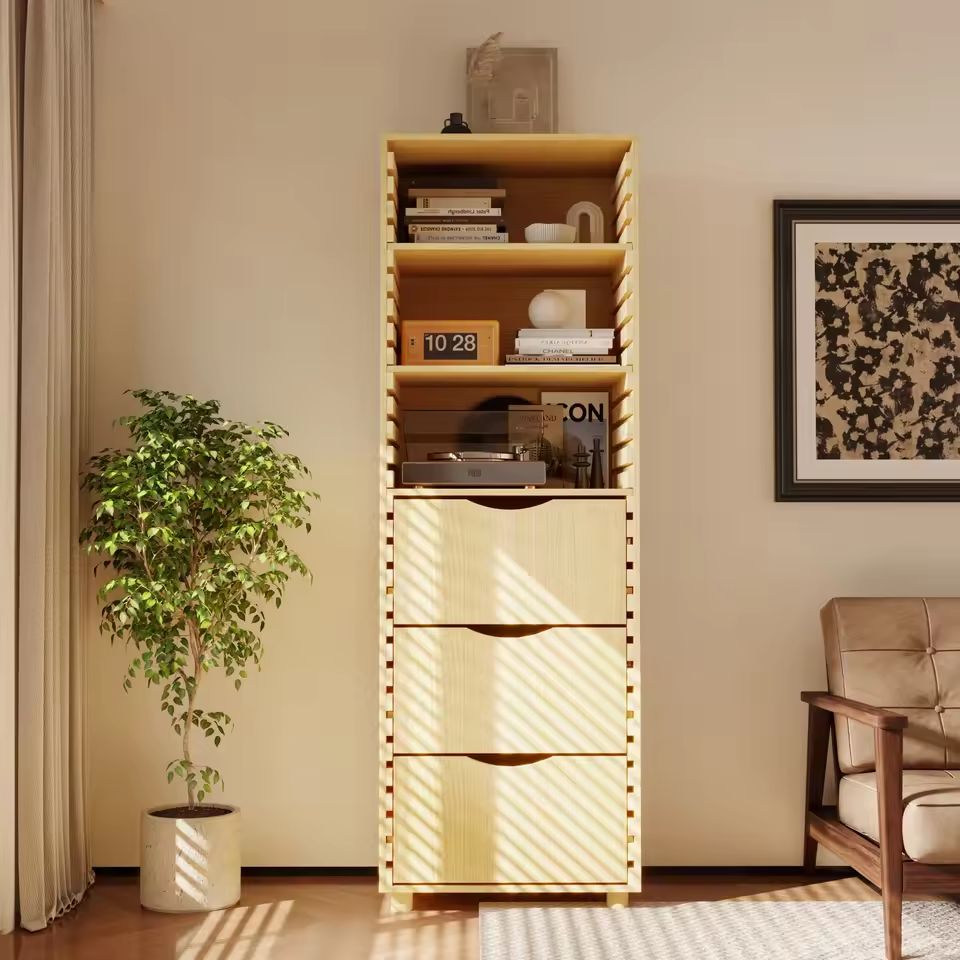
Common Mistakes and Maintenance Tips
Avoiding errors and proper care ensure wooden shelves remain functional and beautiful for years. Here’s what to watch for:
Common Mistakes:
- Overloading:
Heavy books or electronics can warp shelves over time. Distribute weight evenly and avoid stacking items too high. - Humidity Exposure:
Placing shelves in bathrooms or kitchens without moisture-resistant wood (e.g., teak or cedar) may cause warping or mold. - Poor Placement:
Direct sunlight fades wood finishes and dries out the grain. Use UV-filtering curtains in sunny rooms. - Neglecting Dust:
Accumulated dust damages finishes and attracts pests. Wipe shelves weekly with a soft cloth.
Maintenance Tips:
- Finishing Care: Reapply beeswax polish annually to preserve wood’s natural luster.
- Stain Removal: Blot spills immediately with a damp cloth; avoid harsh chemicals.
- Support Additions: Use felt pads under heavy items to prevent scratches.
Regular upkeep and mindful usage turn wooden shelves into heirloom pieces. Prioritize quality wood and thoughtful placement to maximize longevity.